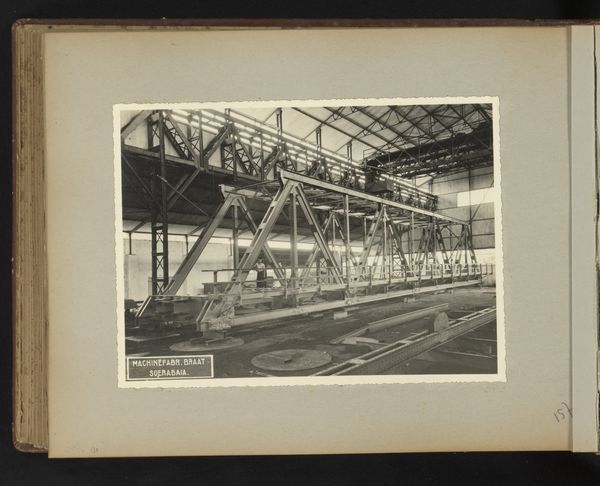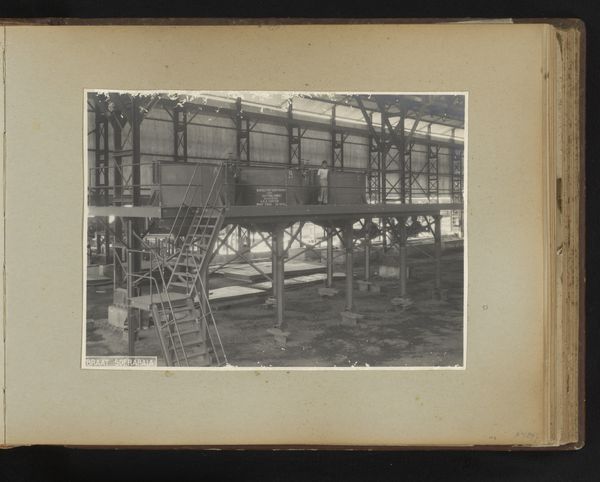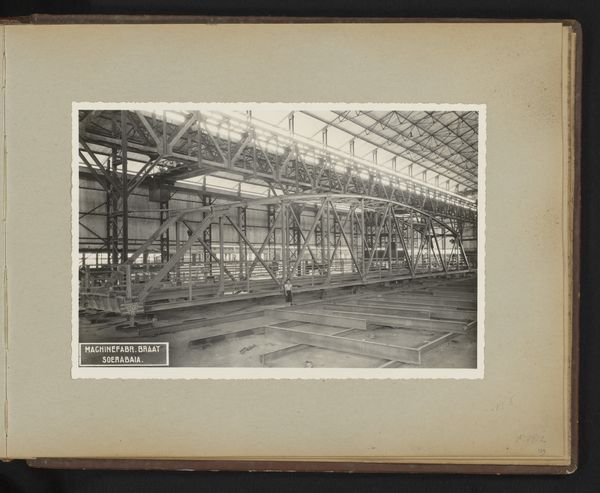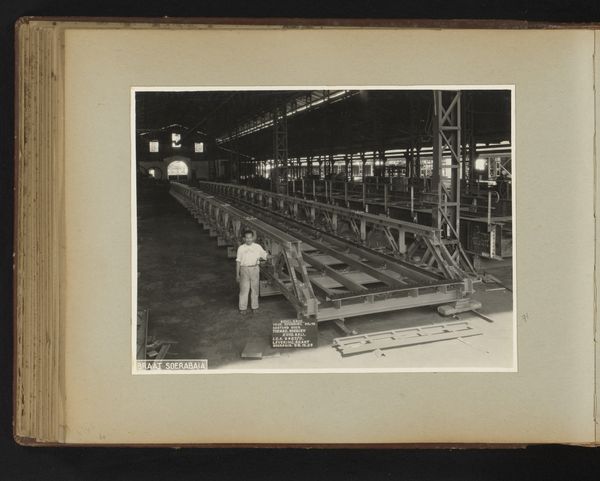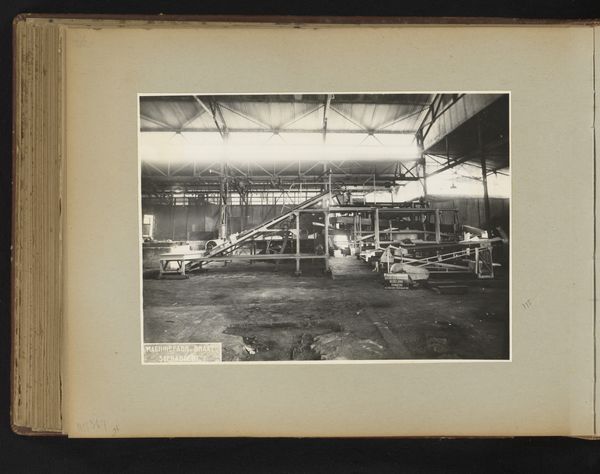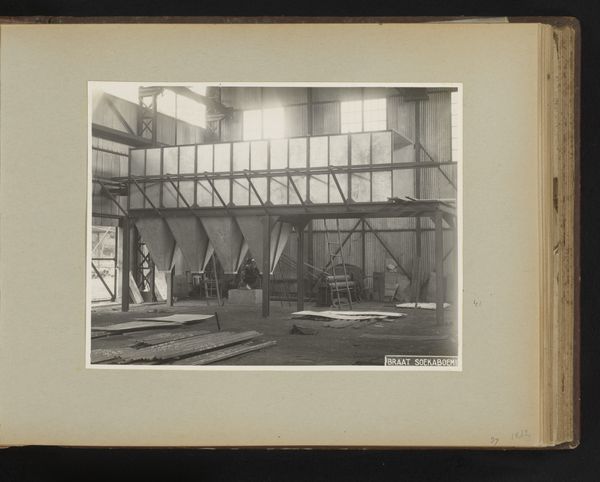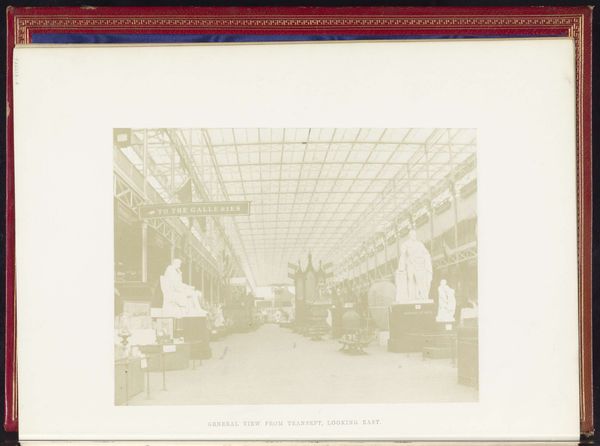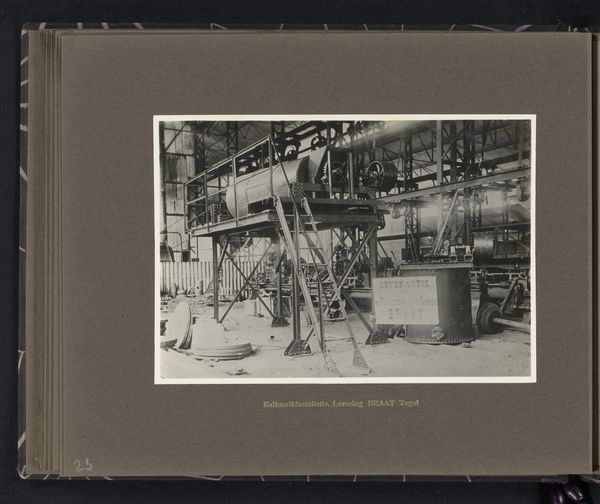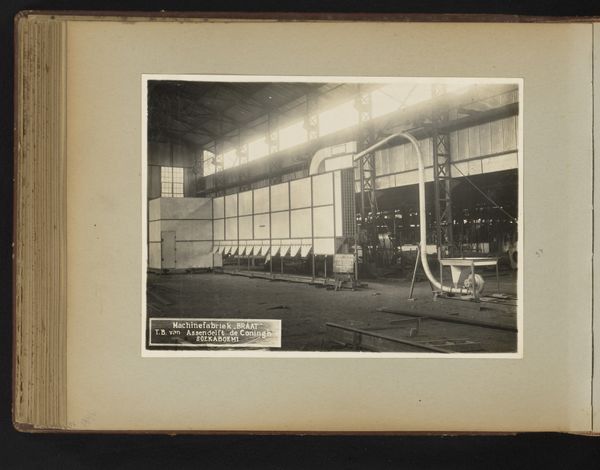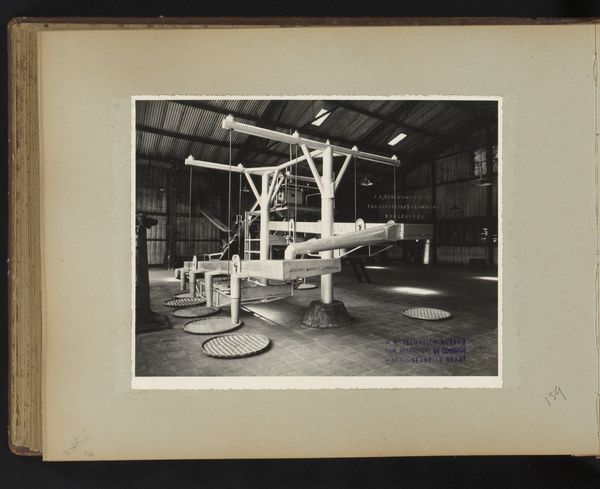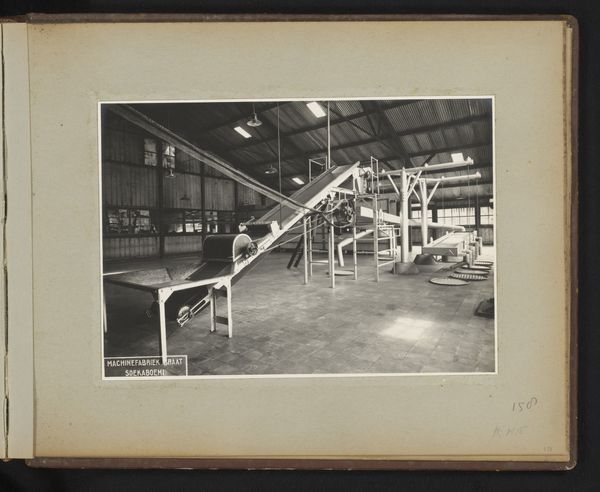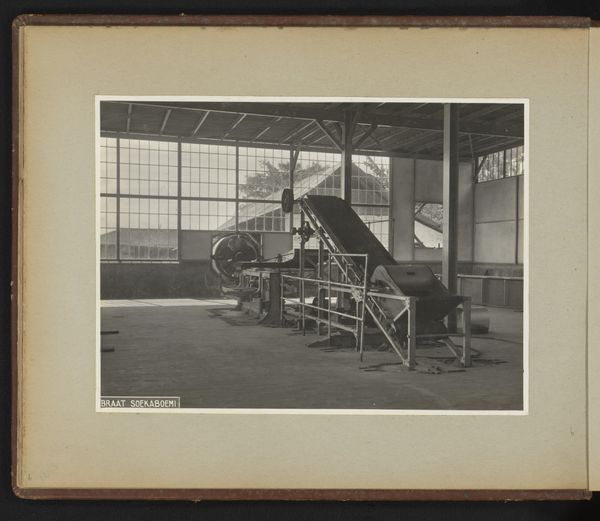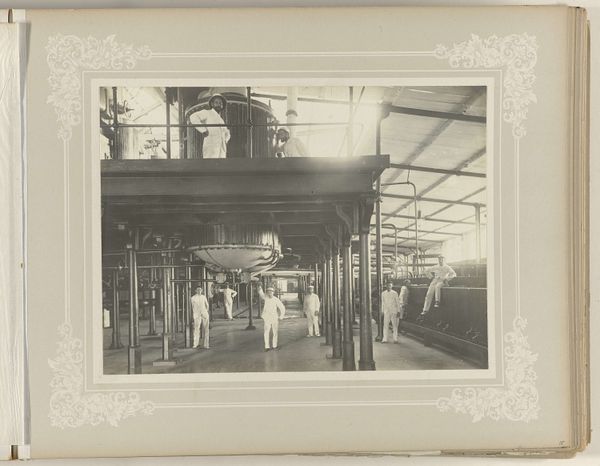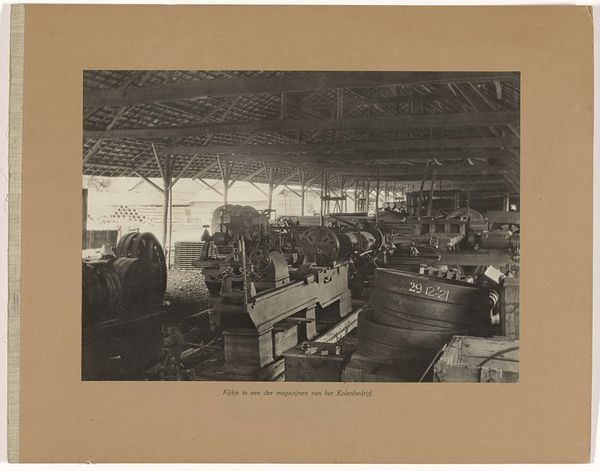
metal, photography, gelatin-silver-print
#
metal
#
photography
#
gelatin-silver-print
#
realism
Dimensions: height 160 mm, width 224 mm, height 250 mm, width 320 mm
Copyright: Rijks Museum: Open Domain
Editor: Here we have an intriguing gelatin silver print, "Vakwerkbrug," taken sometime between 1931 and 1937, currently held at the Rijksmuseum. The photograph depicts what appears to be a section of a metal bridge being constructed, dwarfing the human figure in the shot. It's got a stark, industrial feel. What strikes you most about this piece? Curator: The photograph operates on multiple levels. Firstly, its historical significance. This image provides a glimpse into the socio-economic context of the interwar period. The bridge represents industrial progress, yes, but whose progress? Where was this bridge meant to be used? Secondly, it represents a celebration of engineering marvels in a colonial context. The "Machine Fabr. Bmdsy Soerabaia" inscription, as well as the Dutch text in the lower right corner, makes me wonder how infrastructure projects like this were being framed politically. The colonial structure relied on technological superiority for legitimacy. Don't you find that juxtaposition intriguing? Editor: Absolutely. I hadn't considered the colonial aspect so directly. It really shifts the narrative. How did the photographer, whomever it may be, potentially contribute to this political narrative through their choice of subject, angle, and composition? Curator: I'm sure this photography may have been commissioned, destined for some trade magazine, a government report or public promotion. It might be a carefully staged image that obscures as much as it reveals. Consider the stoic posture of the person against the massiveness of metal – is it intended to convey control and order, a symbol of human domination over nature, reinforced by technological achievement, all to project political control? Editor: That reframing really deepens the image's complexity. I now understand it isn't just a photograph of a bridge section but also a visual representation of the socio-political structures at play during that time. Curator: Exactly. The public role of art—or even documentary photography like this—is never neutral. It actively participates in shaping our understanding of history. Editor: Thanks, that was insightful. It makes me think more critically about how images like these are presented and what stories they really tell.
Comments
No comments
Be the first to comment and join the conversation on the ultimate creative platform.
